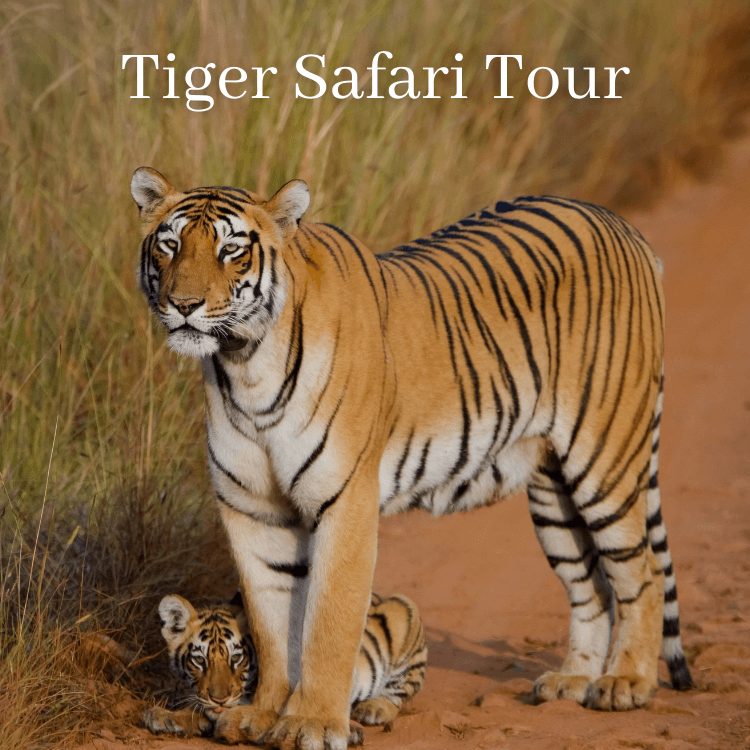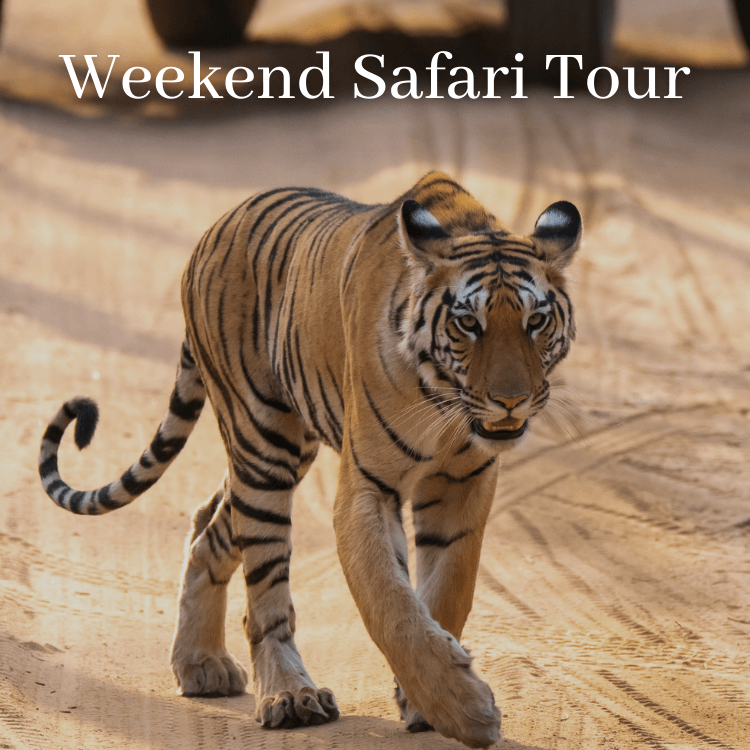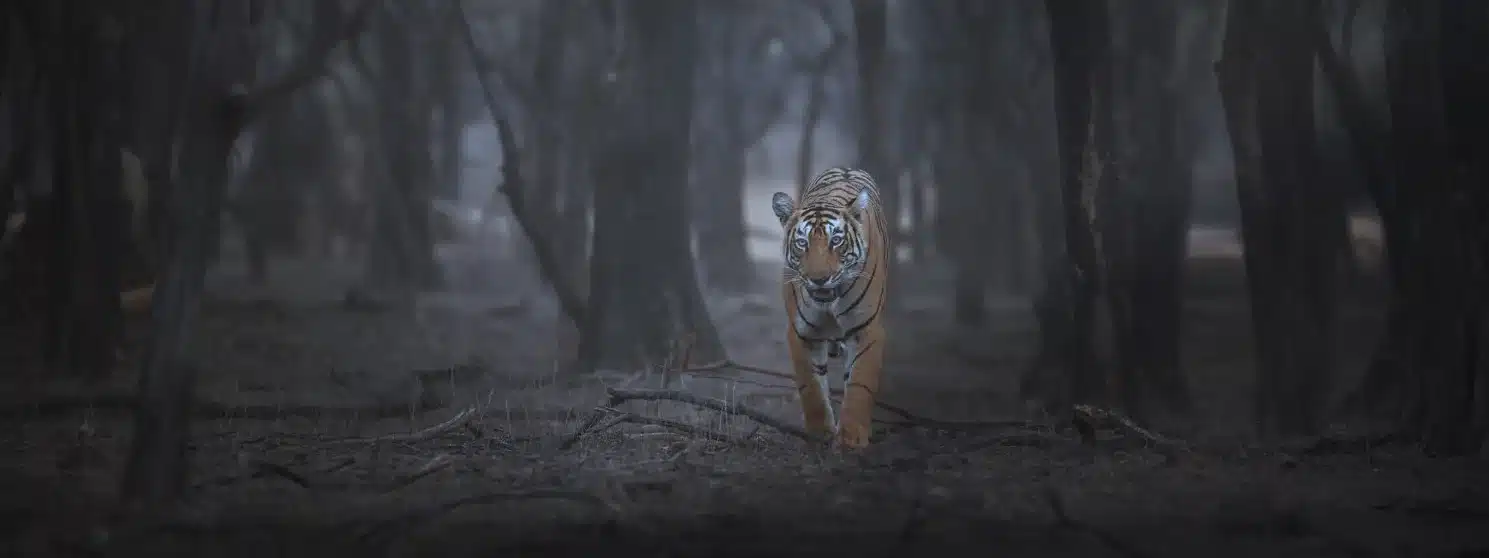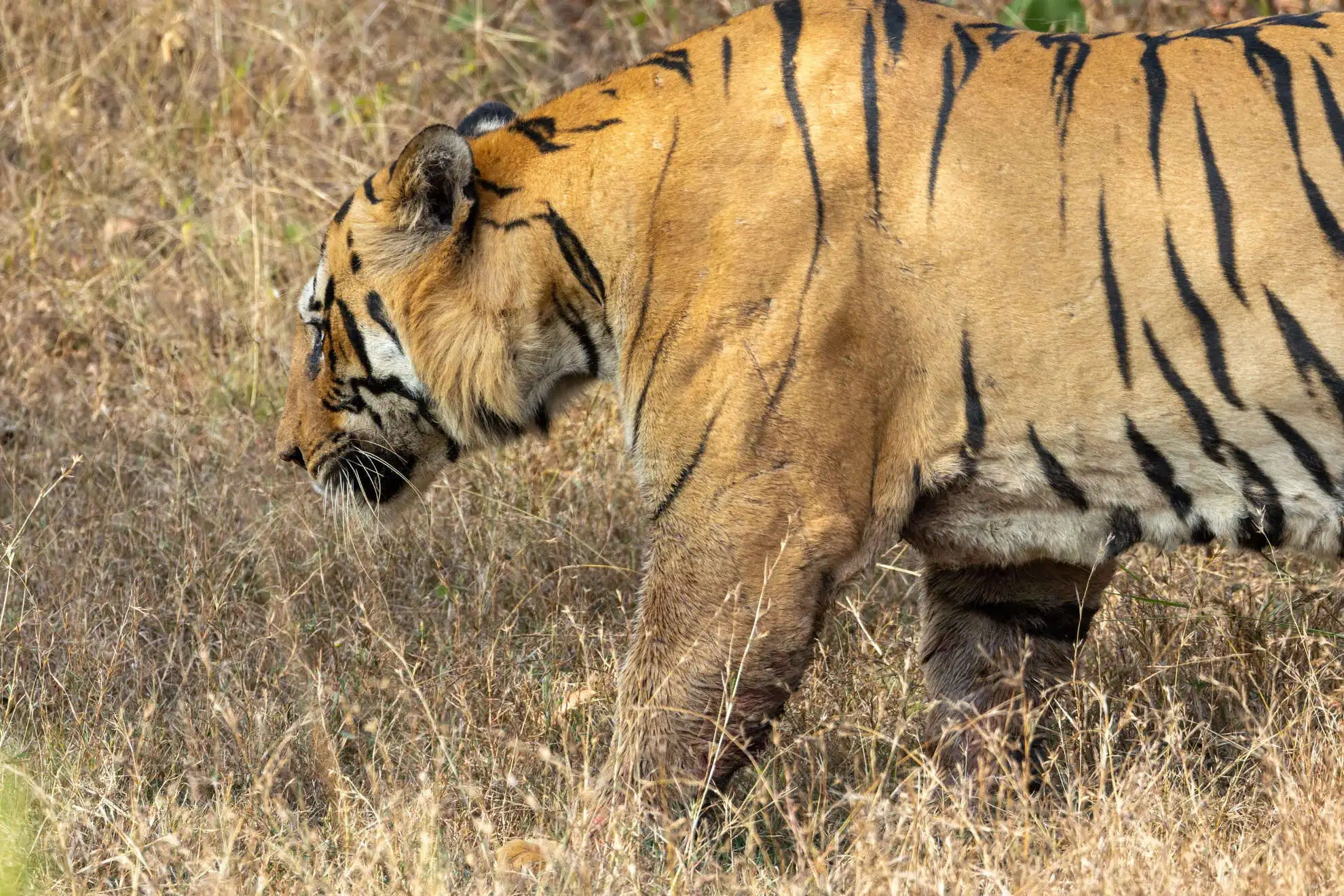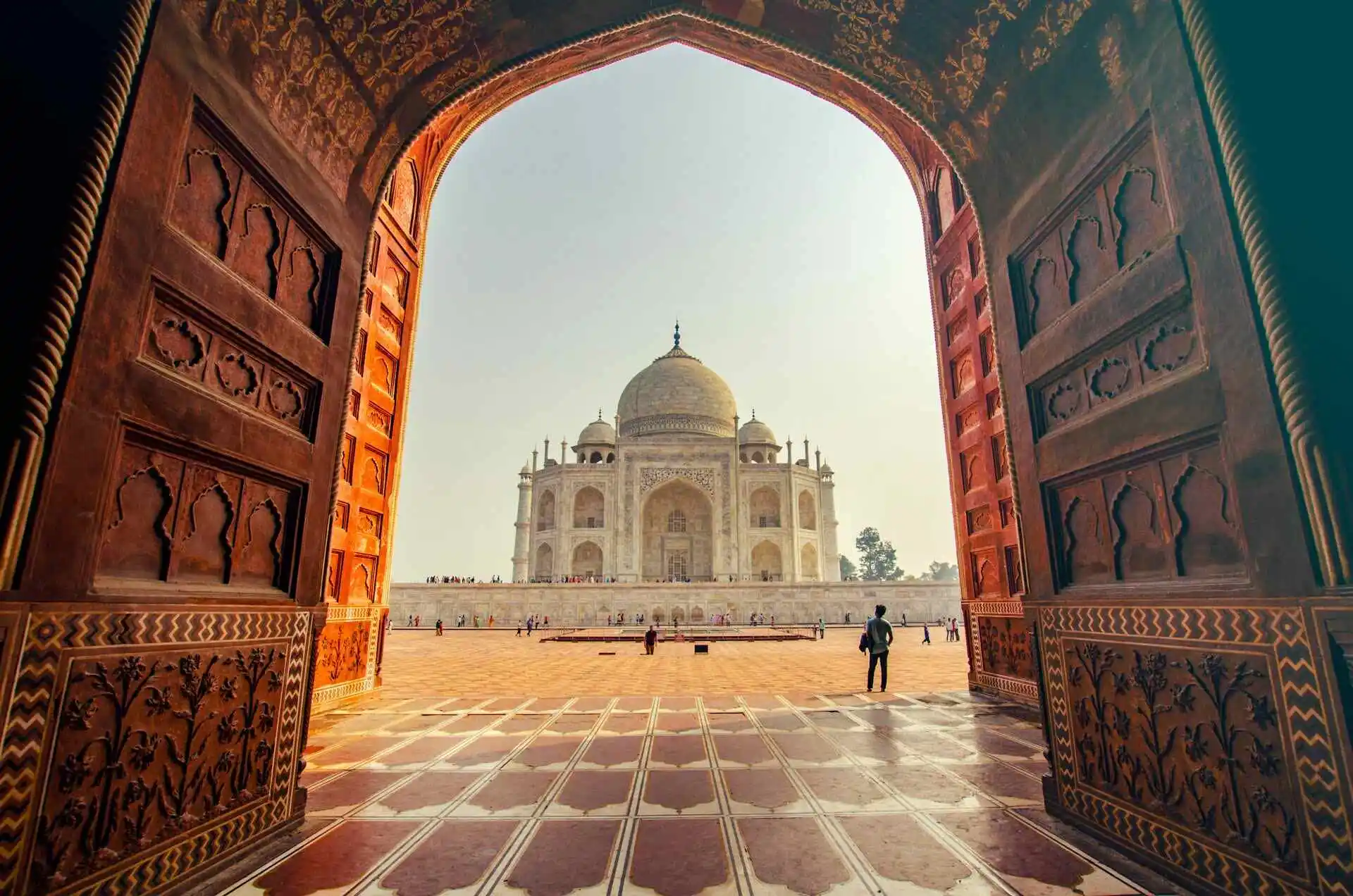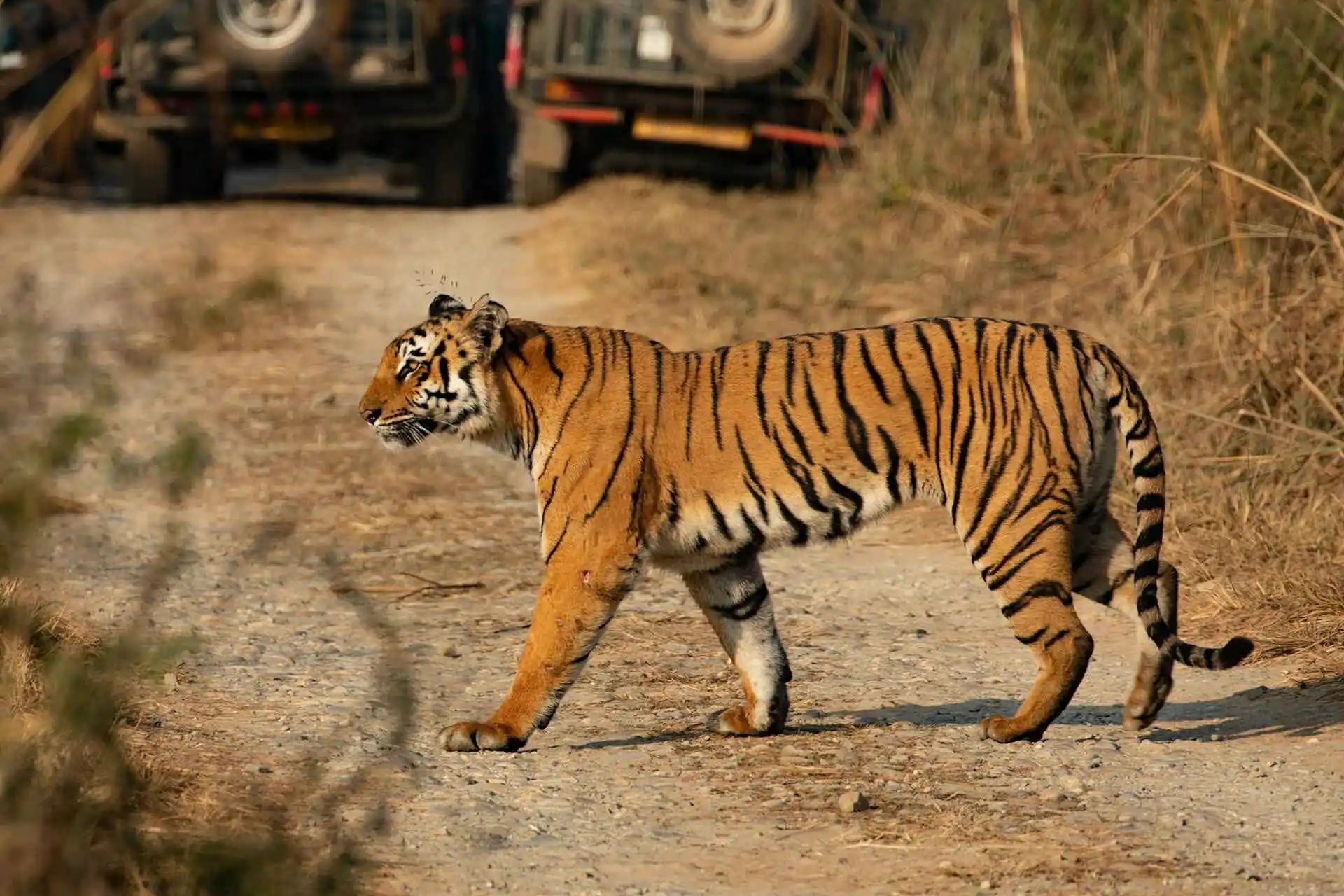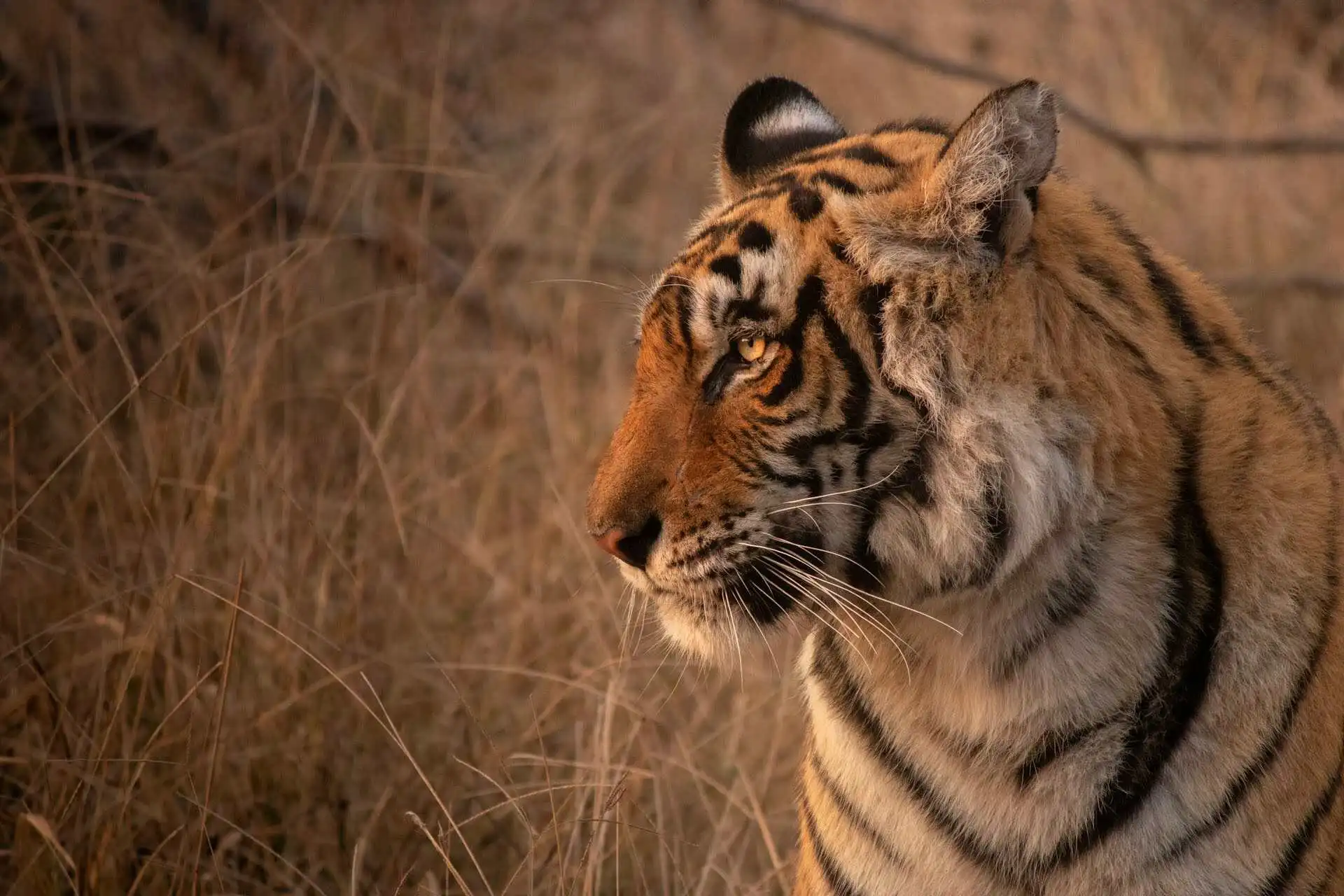Frequently Asked Questions – Safari in India
Frequently Asked Questions
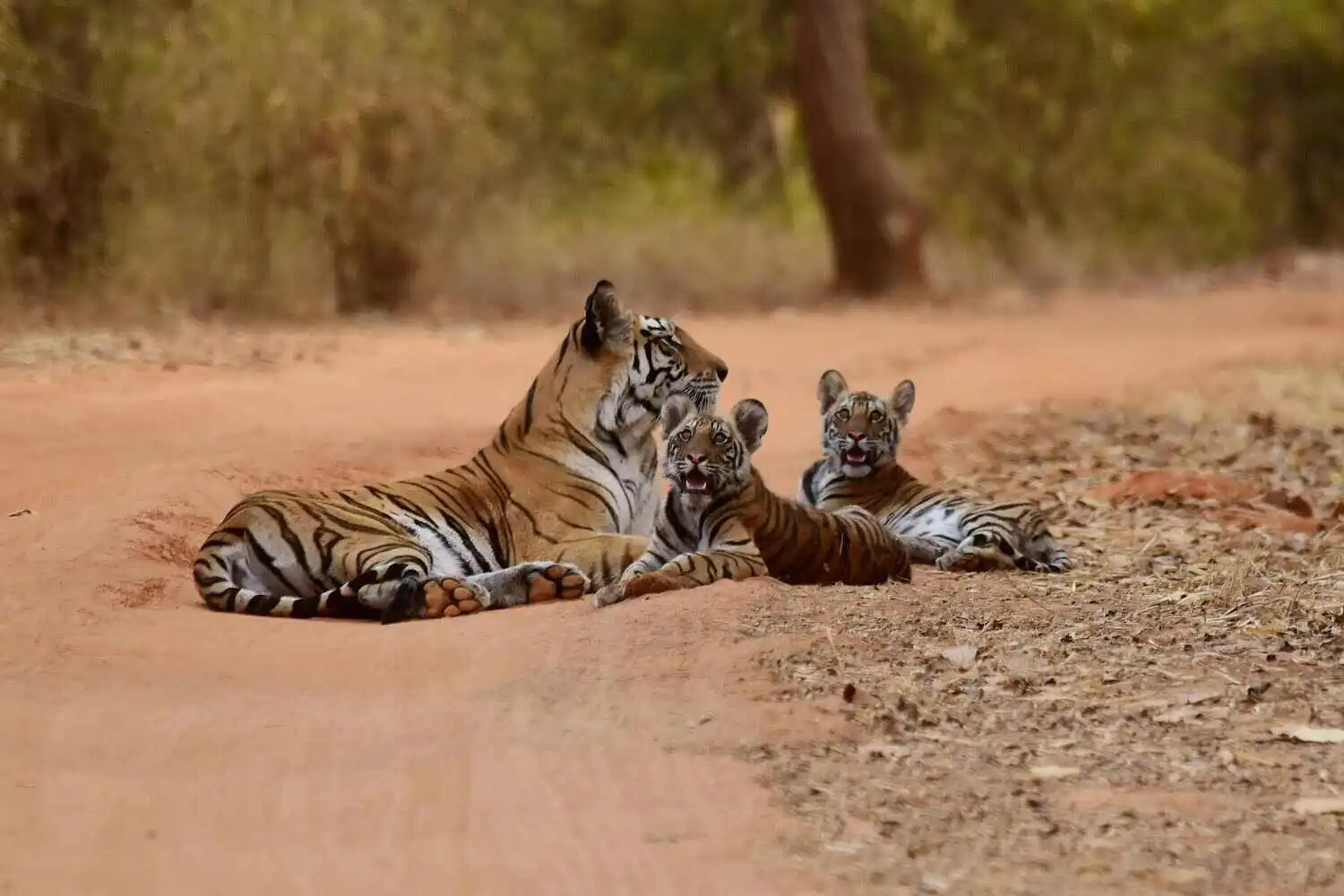
Tiger Safari FAQs

General Travel FAQs

Safari Guideline FAQs
Wildlife & Tiger Safari FAQs
Which is the best season for tiger sightings in India?
The best season for tiger sightings in India is typically during the dry season, which is from October to June. During the winter season, from November to February, the forest is a bit dense and green, making it a beautiful backdrop when we see the tiger. The months of February to June, before the arrival of the monsoon season, are especially favorable because the vegetation is dry and less dense, making it easier to spot tigers as they move around in search of water and prey. During this time, water sources become scarce, causing tigers to gather around remaining water bodies, increasing the chances of sightings. It’s important to note that tiger sightings can still occur during other seasons, but the dry season offers better visibility and higher probabilities of spotting these magnificent creatures in their natural habitat.
What is the difference between a Jeep and a Canter safari?
A jeep is usually an open-roofed maruti gypsy which can accommodate 6 tourists and a driver and guide. These open jeeps are the most preferred safari vehicle in India. A canter is an open-roofed minibus with a capacity of 16-20 tourists along with a driver and guide.
What are the different types of jungle safaris available in India?
The most popular type of safari in India is an open Jeep safari, which offers the best sightings and experiences. Along with it, the other options are canter safari, boat safari, walking safari, and elephant safari or elephant joyride.
Where can i see Elephants in India?
Wild elephants can be seen in Kaziranga National Park, Jim Corbett Tiger Reserve, Manas National Park, Nagarhole National Park, Bandipur National Park
What is the probability of spotting a tiger in Safari?
The probability of spotting a tiger on a safari can vary greatly depending on multiple factors, like the location of the safari, the density of the tiger population in that area, the time of day, the duration of the safari, the expertise of guides and trackers, and even some luck. In reserves with healthy tiger populations, the chances of spotting a tiger are generally higher compared to other areas. However, even in these prime habitats, tiger sightings are not guaranteed.
To maximize the probability of spotting a tiger, it is recommended to choose a reputable safari expert with a good track record of tiger sightings, and having experienced guides who possess knowledge about tiger behavior and habitat can improve the probability of a successful sighting.
How many persons can share one safari vehicle?
A safari vehicle can be shared by up to six people, but we recommend only four people per gypsy for photography comfort.
What are the chances to spot a tiger in Safari?
The chances of spotting a tiger in a safari can vary depending on factors such as the location, time of year, and tiger density in the park. In well-established tiger reserves like Ranthambore, Bandhavgarh, Tadoba, and Kanha in India, the chances can be relatively higher due to dedicated conservation programs and knowledgeable guides and drivers. However, tiger sightings are never guaranteed, as they are elusive creatures. Patience, multiple safaris, and following the guidance of experienced guides can increase your chances of spotting a tiger.
What is the best time to do a tiger safari in India?
The best time for a tiger safari in India varies from park to park and from season to season. But the most preferable time for tiger sightings in India is from January to June every year.
What other animals can be seen during a tiger safari?
Along with the prime predator, on a safari, you can see leopards, wild dogs, rhinos, elephants, Indian gaur, sloth bears, spotted deer, rhesus macaque, langoor, sambhar, swamp deer, blackbuck, nilgai, Indian fox, golden jackal, wild boar, crocodiles, reptiles, and a lot of birds. Some of this wildlife is specific to the parks and cannot be seen in all of them. However, these are the prime wildlife species of the Indian forest.
Where can i do Leopard Safari in India?
Jawai and Jhalna are the two leopard reserves where specific leopard safaris can be done. Other than these reserves, Pench, Ranthambore, Tadoba, Kanha, and Nagazira are the parks where leopards can be spotted easily.
Where can i do an elephant-back safari in India?
An elephant safari can be done in Kanha National Park, Bandhavgarh National Park, and Kaziranga National Park. However, we do not promote or encourage elephant-back safaris.
Where can i see Rhino in India?
Kaziranga National Park, Dudhwa National Park, and Jaldapra National Park are the best parks to see rhinos in India.
What is the cost of a tiger safari in India?
The cost of a tiger safari tour varies depending on a lot of factors, The prominent factors that determine tiger safari cost are the season, type of accommodation (budget, midbudget, or luxury), number of people traveling, number of parks to be covered, number of safaris, and if you are doing sharing safari or exclusive safari.
Are there specific safaris to see the species other than Tigers in India?
Yes, there are parks that offer safaris other than tiger safaris. GIR Forest offers Asiatic Lion Safari; Kaziranga has One Horned Rhino Safari, similarly, there are parks specific to leopards, Indian elephants, etc
Which is the best national park for a tiger safari in India?
The best park for a tiger safari may change from time to time depending on the number of tigers in the park, tigers movements, seasons, and some other factors. It is best to seek expert advice before finalizing the trip to a specific park. However, there are many parks in India like Bandhavgarh, Tadoba, Kanha, Pench, and Ranthambore where sightings are good throughout the year.
Why should I travel India for Tiger Safari Tour?
India is the ultimate destination for Tiger safaris. As per the 2022 tiger census India homes 3167 Tigers, which is almost 75% of the whole world’s tiger population.
What is the ideal tiger safari tour length?
The ideal tiger safari tour length depends on the individual’s preference, interest, number of parks to be covered, and obviously the budget. We recommend at least 4 to 5 nights in each park to cover the prominent tiger territories and zones. However, it is completely customizable based on interest and availability.
Are the parks open for Tiger Safari during Monsoon season?
In India, most of the tiger reserve’s core zone remains closed during the monsoon season from the 1st of July to the 30th of September every year. However, the buffer zone is open throughout the year for visitors. Buffer zones of the park like Tadoba and Pench have a good tiger sighting index during the monsoon as well.
Where can i do Lion Safari in India?
Asiatic lion safaris can only be done in the GIR Forest National Park in India. GIR is the last natural habitat of Asiatic lions in the world.
Which national park has the most tigers in India?
Jim Corbett Tiger Reserve in Uttarakhand has the most tigers in a park. There are 252 tigers in Jim Corbett. However, because of the topography of Jim Corbett, the sighting index of Jim Corbett is a little less than that of the parks in central India but, Jim Corbett is one of the most beautiful park in India
Which state has the maximum number of tigers in India?
With 526 Royal Bengal tigers in the wild. Madhya Pradesh is the state with the highest number of tigers in India. Madhya Pradesh lies in central India. Some of the prominent tiger safari parks in Madhya Pradesh are Kanha, Bandhavgarh, and Pench National Parks.
General Travel FAQs
What is the vehicle available for the safari in India?
Most of the wildlife safaris in India are carried out in Maruti Gypsy (open-roof jeeps). However, some of the parks have a few custom vehicles available with luxury resorts, which are more comfortable during the safari. We highly recommend doing a safari in forest department’s open jeeps for a better experience.
Other than gypsies, the forest department also has canters and minibuses available at a few of the gates in some national parks.
How will be the weather in the national parks in India?
October to February is winter post monsoon, and the weather is pleasant during these months. The forest will also be lush green and dense during this time of year.
March to June is summer, and this is the best time to spot the wildlife in the park. However, the temperature in some parts of the park may reach more than 45 degrees Celsius during the afternoon. Although the morning safari would be pleasant and the evening safari would be a little hot in the first couple of hours, it become pleasant as we approach the evening.
From July to September, most of the national park core zones are closed for tourism, but tourists can explore the buffer zones of the parks. Some of the national parks, like Tadoba and Pench, have really good buffer areas with a very good sighting index for tigers.
What are the stay options in and around the tiger reserves in India?
We have accommodations ranging from budget to the most luxurious stay options in most of the prime tiger reserves of India
Are the lodges located inside the park or outside?
No, in India, in the interest of wildlife, most of the lodges are located in the buffer areas outside the core area of the national park. However, these lodges are really close to the core gate, and usually you can spot wildlife around the lodges.
Are the Tiger safari safe?
Our guides and drivers are highly experienced and trained. They are very familiar with the park and will provide you a guidelines on the safety. Following park regulations, staying inside the vehicle, and heeding the instructions of experienced guides are crucial for ensuring safety during the safari.
Can we spot animals from our lodge or resort?
Yes, as the lodges are on the edge of forest, many times you can spot wildlife from your room’s balcony or windows.
How many hours does a safari last?
Normally, a safari lasts for an average of 4 hours, depending on the season.
Are there restrooms inside the forest?
There are restrooms in the dedicated breakpoints, but they may not be very clean and not always accessible during the safari.
What kind of clothes should I wear?
Wearing natural colors and avoiding bright colors is recommended. Wear light, breathable clothing suitable for the climate and weather conditions of the safari location. It is advisable to wear neutral-colored clothing that blends with the surroundings. Camouflage prints are the best.
Do we have a mobile network inside the forest?
Most of the park allows mobile phones inside the forest. However, there will be no or very limited network coverage in the forest during the safari. We should always keep our phones on silent mode during the safari in the interest of wildlife.
What should I carry on a safari inside the forest?
Camera, Binoculars, Hat, Scarf, Water bottles, Light snack, Insect repellant: depending on the season, you can also consider carrying sunscreen or Winter lotion
Do we have Wi-Fi in the lodges?
Not very fast, most of the lodges are in remote areas and have limited network coverage. Basic internet may be available in the common areas in the lodges.
Is it possible to club more than one national park in a visit?
Sure, we can combine visits to multiple national parks on the same trip. Just write to us at sa****@**********ia.com about your interest.
Popular Tiger Safari in India
Safari Guideline FAQs
How many people can share a safari vehicle?
A maximum of 6 Tourist can be accomodated in a safari vehicle.
Can we come out of the safari vehicle to stretch our legs during the safari?
Coming out of the vehicle is only allowed in some designated areas during the safari.
Can we explore the forest on foot?
There are designated walking trails in some of the parks where walking safaris are allowed, Other than these trails, it is not allowed to explore the forest on foot.
Is it mandatory to take a forest guard on a safari?
Yes, it is mandatory to take a forest guide in the safari jeep.
Can we explore the area around our lodge on foot?
You can, however, it is not recommended to come out of the resort premises without a guide or naturalist who knows the area around.

